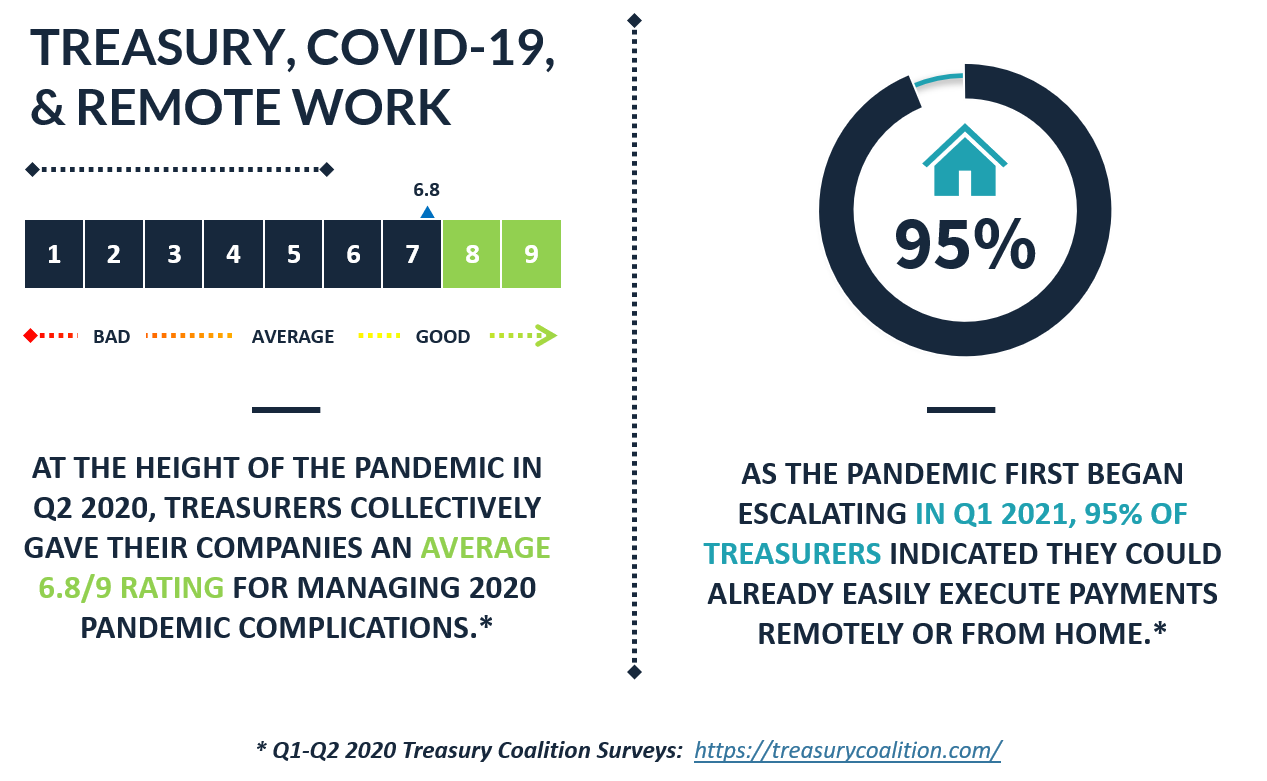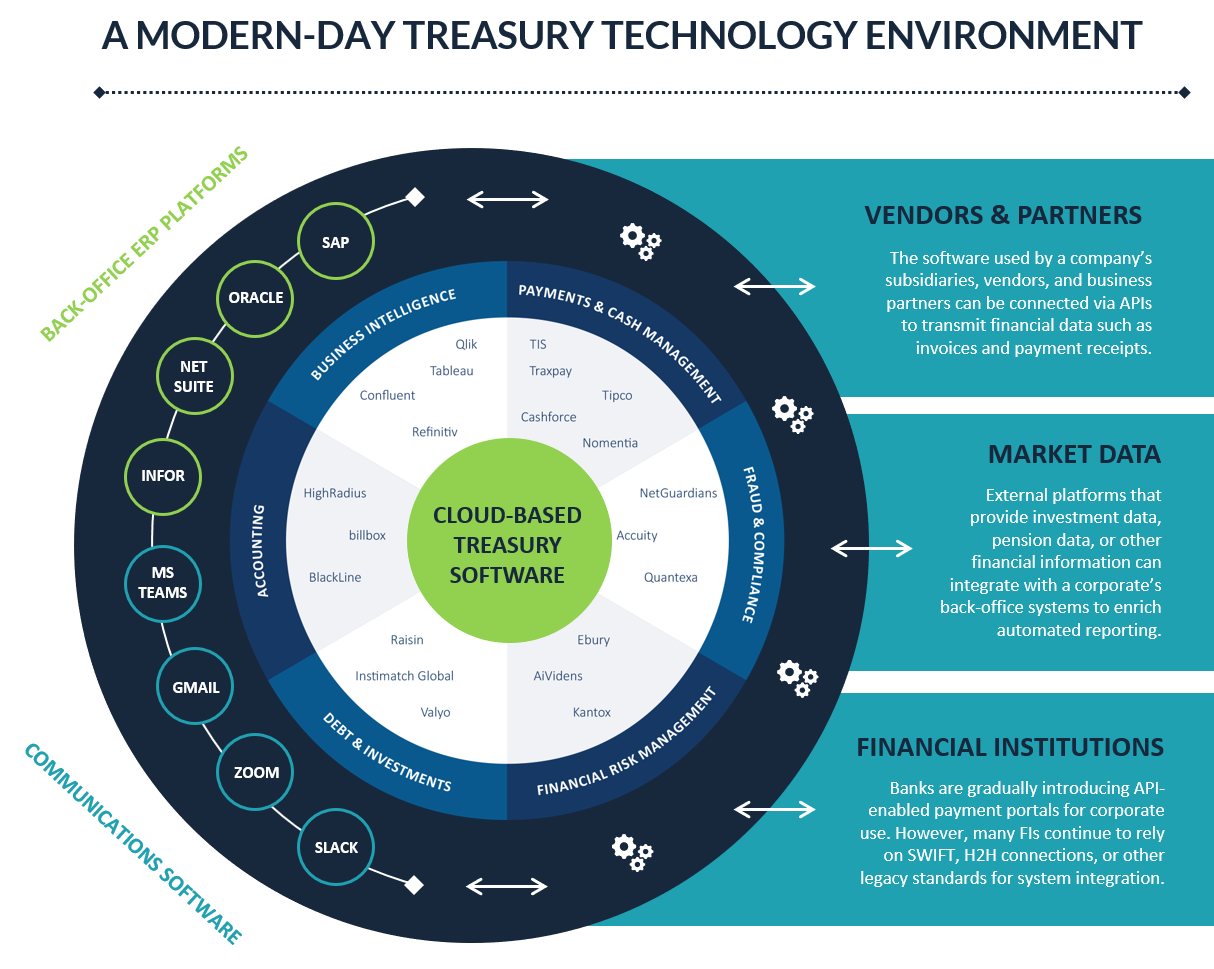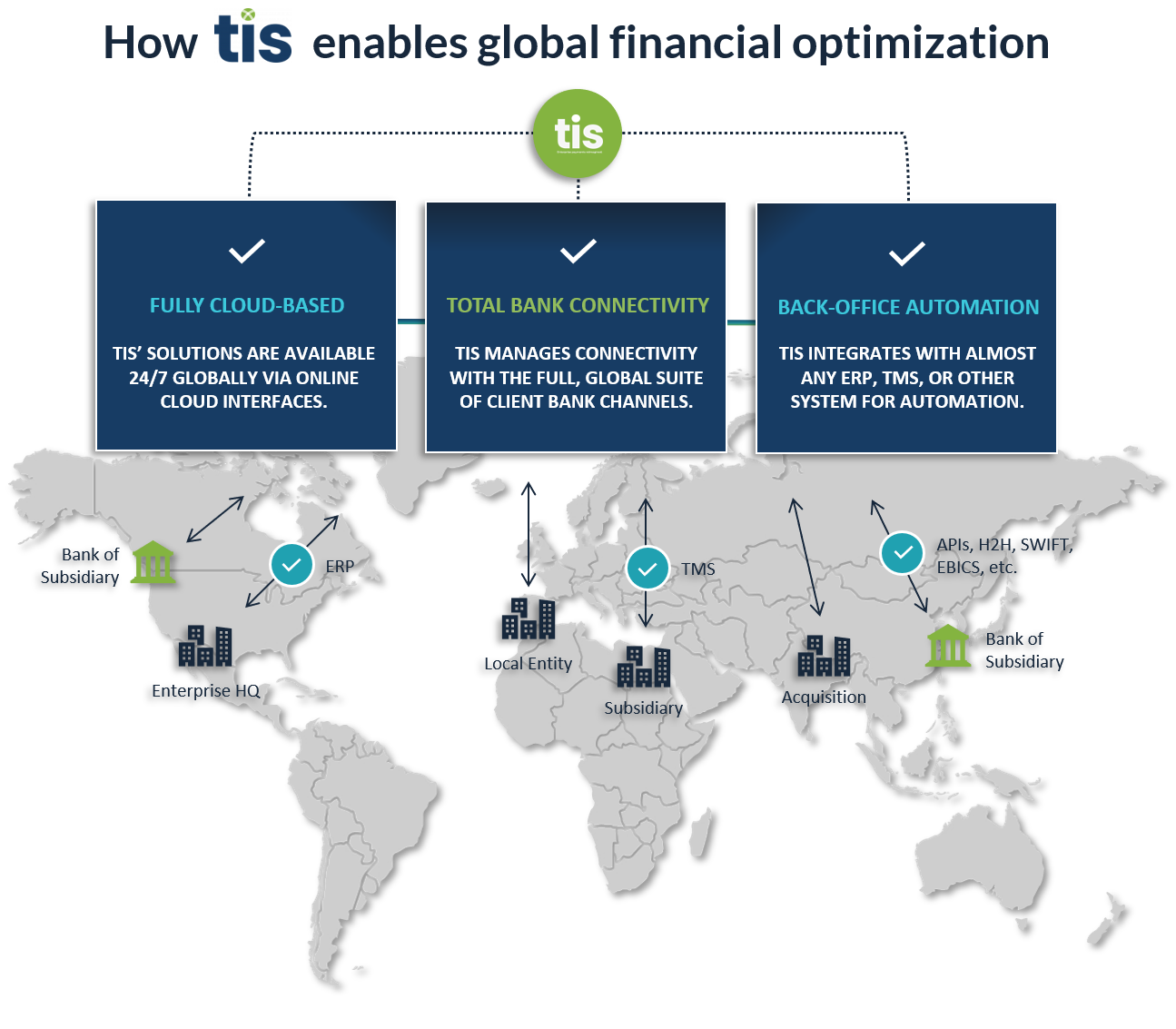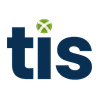There’s no doubt that the Corona virus changed our working world. Many workplaces were forced to send employees home practically overnight and provide them with “appropriate” technology to make them successful. As this work from home practice continues, there are many employees and employers who are coming to believe that a hybrid workplace may be the ultimate solution. However, how does this effect our efficiency and effectiveness within, for example, the finance area? Do we need to be together physically to optimize corporate treasury including the payments process? Are there ways to work remotely and still gain the needed efficiencies? We will explore these points below and see how an Enterprise Payments Optimization (EPO) platform can help support new hybrid ways of working.
Does it matter where the work gets done?
“Covid 19 has made one thing clear: work is something you do, an outcome, not a place or a time,” says Jeff Clarke, chief operating office of US-based Dell Technologies. [FT: Office, home or hybrid? Business must embrace the evolution of work] Despite the potential embrace of a hybrid model, though, most organizations have only begun to think through how to carry out a more permanent mix of remote and on-site working for all roles that aren’t essential to perform on site. Others are jumping in like the financial services company Société Générale. They have already given their 40,000 employees based in France the right to tele-work from home for up to two days a week. Research from the Harvard Business Review found that 70% of companies – including giants like Google, Citi and HSBC – are moving to a hybrid construction. Other companies are taking an even broader approach, using a hub and spoke model to consider having employees work from satellite sites including shared office spaces. They are even considering more unique sites like museums and sports venues. This almost sounds like a panacea for employees, but what happens when we look more closely at e.g., corporate treasury? Can finance functions really be performed while staff or enjoying a new, hybrid way of working?

Access to data for people and systems, regardless of their location or business line is a prerequisite to a well-functioning Finance Area
The key for global companies with a high level of complexity – including a hybrid working model – is a 360-degree view of their business. Corporates also need the ability to streamline and standardize processes without reducing flexibility for the relevant organizational stakeholders. An Enterprise Payment Optimization (EPO) layer (platform) helps to close various gaps by serving as a hub and allowing for needed visibility into people, processes, and the data behind these processes. Information critical to confirm the adherence to policies and guidelines or for the analysis of gaps or roadblocks, provides the foundation for continuous improvement. Data from outbound payments and inbound information must be available to all parts of the company who need it, regardless of their working location! Breaking down data silos with the right technology is key.

Some companies are pushing back against a work from home model
Now that they’ve gotten used to the idea, many workers are in agreement that they don’t want to return to the office, or at least not on a fulltime basis. Yet, some companies are still pushing back against the idea of a work-from-home or a hybrid model and insisting employees come back to the office. Expensive real estate and the desire for “collaboration” are two of the reasons stated for this push. There is even the desire to use AI to check up on employees’ productivity by using stealth technology to monitor and measure activity. It comes down to a trust issue between employee and employer. Not every employee is working a standard 8-5 model to get the job done, but the creativity of when and where to complete the work is part of what the whole hybrid push is about. But more employers are understanding that a hybrid model may stave off an exodus from occurring for employees who have gotten used to rolling out of bed and walking down the hallway to start their day.
However, how does this affect collaboration and in turn the functioning of a corporate finance department? If every staff member works from home – at least part of the time – there is a danger of creating isolated pockets of knowledge and expertise. This can be disastrous if we think about corporate treasury. Silos reduce visibility, communication, and therefore growth. A company’s liquidity, profitability, and exposure to risk – including cybercrime and fraud – are negatively impacted without a holistic view across borders as well as business units. This principal transcends individual departments. Not all enterprises desire, nor is it possible, to achieve a high degree of centralization of staff or information. Many feel that hybrid models are here to stay. However, without total centralization it is even more important to support standardization and importantly collaboration – company-wide – through the introduction of an EPO layer.
Not everyone loves a hybrid model
As much as many hate their commute, it helps build in some distance and decompression time between home and work. That said, working from home isn’t a panacea for everyone. Saving your commute time to start the day even earlier has begun to blur the lines between work and home, actually making an employee’s work/life balance more challenging to manage. Being in the office generally means a more formal start and end time and there’s a signal as other colleagues leave at the end of the day.
Working from home can mean an endless workday and with shorter lunch breaks, answering late night email, and a tendency to work even if you’re not feeling well. Space can also be at a premium. Not everyone has the luxury of a private office area to work from at home. Background noise from animals and children can be distracting. By now, everyone has made the joke about the cat that walks across the laptop, or the barking dog, but when that barking dog is yours, the joke is far less funny. These things can cause stress for employees who may not be enjoying their time at home.
Isolation can also be a source of stress for work-at-home employees. The lack of ability to network casually and the inability to be a part of an onsite work culture can make working from home, especially for those earlier in their career, far less palatable.
In summary
It’s clear that we still haven’t found the perfect solution to the hybrid conundrum. We do know that workplaces won’t look the same as they did pre-pandemic and we have collectively gone through a time and experience no one could have imagined. Can employees fully embrace the idea and do they want to? For those that do, can employers get used to the idea and fully support it? One thing is clear – we don’t have all the answers to this work in progress, but the chance to have the flexibility to choose seems to be garnering support from all, making the need for a reduction of complexity and a better and more stream-lined management of data absolutely essential.
An EPO layer can become the foundation to support and underpin hybrid working within treasury, helping to break down traditional company barriers to information sharing. It allows new possibilities for connection and collaboration between finance departments and other areas globally. EPO also facilitates community intelligence beyond single companies to take advantage of their experience and knowledge to, for example, reduce the risk of fraud.
How TIS Enables a Seamless Financial Work-From-Home / Hybrid Environment
TIS’ Enterprise Payment Optimization platform is a global, multi-channel and multi-bank connectivity ecosystem that streamlines and automates the processing of a company’s payments across all their global entities and systems. By sitting above an enterprise’s technology stack and connecting with all their back-office, banking, and 3rd party solutions, TIS effectively breaks down department and geographic silos to allow 360-degree payments visibility and control. To date, the ~200 organizations that have integrated TIS with their global ERPs, TMSs, and banking landscape have achieved near-100% real-time transparency into their payments and liquidity. This has benefitted a broad variety of internal stakeholders and has also enabled them to access information through their platform of choice, since the data that passes through TIS is always delivered back to the originating systems.
This systematically controlled payments workflow is managed by TIS for both inbound balance information and outbound payments, and data can be delivered from any back-office system via APIs, direct plug-ins, or agents for transmission to banks and 3rd parties. No matter where you operate, TIS provides global connectivity by creating and maintaining compatibility with all required formats and partnerships, so that organizations can connect with any bank partner in the world.

Because of the deep connections that TIS maintains with internal systems such as ERPs or TMSs, external banks, and 3rd party vendors / service providers, the process of managing payments is simplified for every internal stakeholder. C-suite executives, treasury, accounting, AP, legal, HR, and other key personnel can access whatever financial data they need, exactly when they need it. And by automating this flow of information for both inbound and outbound payments, TIS provides the control and flexibility that enterprises need to function at their highest level.
Finally, with the global payments data we have amassed and the decades of experience our team has in orchestrating enterprise payments, we are uniquely equipped to help enterprises accurately benchmark their payments performance and provide tailored advice on how to optimize, grow, and mature. When combined with our innovative EPO technology, this rich data and deep experience is what enables us to continually provide industry-leading payment solutions and support to our enterprise customers.
In the digital world of enterprise payments, TIS is here to help you reimagine and simplify.
For more information about how TIS can help you, visit our website or browse our latest resources!



